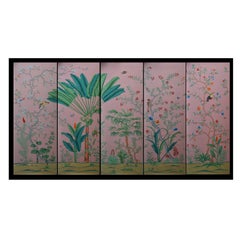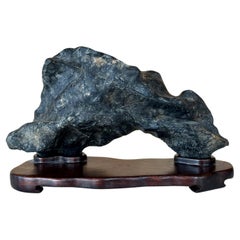19th Century Japanese Poem Calligraphy Hanging Scroll
Antique 19th Century Japanese Japonisme Paintings and Screens
Brocade, Wood, Paper
People Also Browsed
21st Century and Contemporary Chinese Paintings and Screens
Silk
Antique 19th Century Chinese Qing Scholar's Objects
Stone
Antique 19th Century Chinese Chinese Export Scholar's Objects
Stone
Early 20th Century Japanese Meiji Paintings and Screens
Silk
Early 20th Century Japanese Showa Paintings and Screens
Paper
Antique 19th Century Japanese Edo Paintings and Screens
Silk
Antique 1890s Japanese Japonisme Textiles
Silk, Giltwood
Antique Early 1900s Japanese Japonisme Paintings and Screens
Brocade, Silk, Paper
Vintage 1930s Taisho Paintings
Silk
Early 20th Century Chinese Qing Paintings and Screens
Paper
Antique 19th Century Chinese Export Paintings
Paper
Antique Late 17th Century Japanese Japonisme Paintings and Screens
Wood, Paper
Antique 18th Century Japanese Japonisme Paintings and Screens
Silk, Paper
Antique 19th Century Japanese Japonisme Paintings and Screens
Brocade, Wood, Paper
19th Century Qing Figurative Drawings and Watercolors
Paper, Ink
Early 20th Century Landscape Drawings and Watercolors
Silk, Paper, Ink
A Close Look at japonisme Furniture
In the late 19th and early 20th century, France developed an enduring passion for Japanese aesthetics and craftsmanship. Not only did this interpretation of Japanese culture — which became known as Japonisme — infuse fresh energy into French art and design, but it also radically transformed how Europeans, and subsequently the world, would come to understand visual culture.
Until 1853, Japan had been closely guarded against foreign visitors for over two centuries. However, American Commodore Matthew C. Perry sailed into Japan that year and initiated the first of its treaties with the United States and Europe, thereby opening its borders and giving the West its first-ever look at Japanese design.
For the next few decades, taken with Japonisme, sophisticated collectors in Paris, New York and elsewhere gorged themselves on lacquered screens, celadon ceramics and netsuke ornaments, along with artworks depicting various aspects of Japanese life. The East Asian country’s influence on Europe, particularly France, contributed to one of the most creatively prosperous periods in history, leaving an imprint on the Impressionist, Art Nouveau and Art Deco movements, and inspiring artists like Edgar Degas, Mary Cassatt, Vincent van Gogh as well as luxury houses such as Louis Vuitton and Hermès. Japonisme emerged at the time when the ornate Renaissance Revival style was the most prominent mode of decorating in Europe, and Japanese aesthetics seemed strikingly modern and elegant in comparison.
In addition to everyday practical objects from Japan, such as vases, tableware and decorative boxes, Japanese art, especially Japanese woodblock prints by masters of the ukiyo-e school, caught the eye of many artists — particularly those in the Art Nouveau poster community in 1880s Paris. The luscious organic colors associated with traditional Japanese design, motifs like cherry blossoms and carp and the vivid patterns found in woodblock prints, silks and more were adopted and appropriated by painters as well as ceramicists and those working in other fields of the decorative arts. Today, demand for Japanese lacquerware — furniture, trays, writing boxes, screens, incense burners — from the Edo period (1615–1868) and the late 19th century continues to be very strong among collectors.
Find a collection of antique Japonisme furniture and decorative objects on 1stDibs.
Finding the Right paintings-screens for You
Traditional Asian paintings were often created on scrolls and folding screens. Artisans made screens that could be folded up or spread out by connecting several panels using hinges. Today, antique Asian folding screens and paintings are sophisticated decorative accents that can serve as makeshift partitions to ensure privacy.
The original folding screens were created by Chinese artists. The earliest record of screens comes from the 2nd century B.C., and surviving examples date back to the Ming dynasty. Chinese painting utilizes many of the same tools as calligraphy — these screens were crafted from wood with painted panels featuring striking art or calligraphy that told cultural stories or represented nature and life in the area.
The practice was introduced to Japan, where paintings for screens were made on paper and silk, in the 8th century. These paintings frequently feature subjects such as landscapes, animals, flowers and Buddhist religious themes. Along with screens for tea ceremonies and dance backgrounds, there were screens for use in Shinto and Buddhist temples.
In the 17th century, screens began to be imported to Europe where their popularity grew. Coco Chanel famously collected Coromandel folding screens.
Traditional Asian paintings can make a tasteful addition to any wall, and screens can be used as decoration or, in the case of larger iterations, as an aesthetic way to divide a large room. Browse the selection of antique Asian paintings and screens from a variety of styles and eras on 1stDibs.


